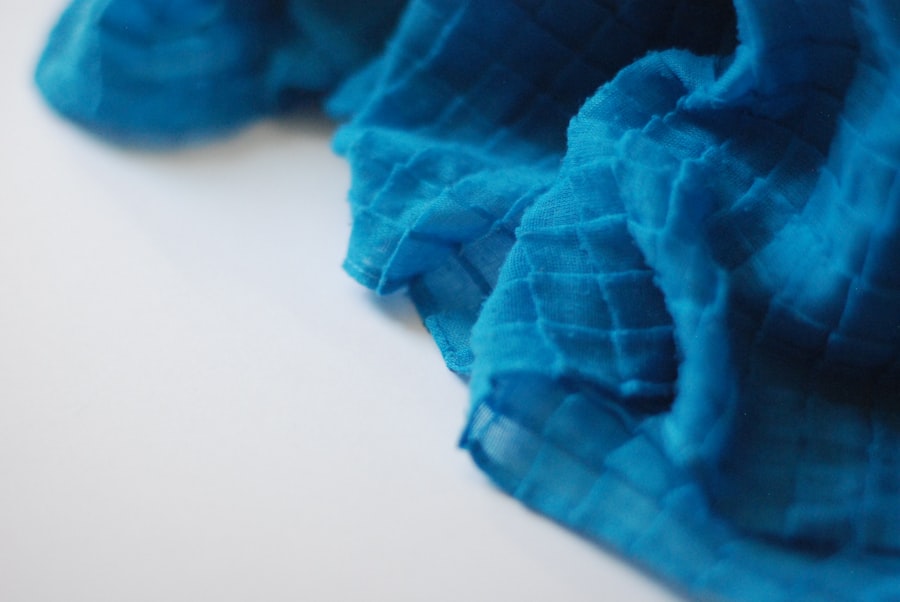Understanding proportions is crucial for dressing well. Proportions refer to the relationships between different elements of an outfit, such as the lengths and widths of garments in relation to the body. It’s important to consider your body shape and size when selecting clothing.
For example, petite individuals may want to avoid oversized clothing, while those with curvier figures might choose garments that accentuate their shape without being too tight. Balancing different elements of an outfit is key to achieving proper proportions. For instance, pairing a voluminous top with slim-fitting bottoms can create a balanced silhouette.
When wearing a statement piece, it’s often best to keep the rest of the outfit more subdued to avoid visual overwhelm. Clothing can be used to create the illusion of a balanced and proportionate figure. For example, high-waisted bottoms or tucked-in tops can visually lengthen a shorter torso, while lower-rise bottoms or tops with horizontal details at the waist can create the appearance of a shorter torso.
Understanding proportions also involves knowing how to highlight your best features and minimize areas of concern. For instance, those with broad shoulders might avoid tops with shoulder pads or puffy sleeves, opting instead for V-necks or scoop necklines that draw attention to the face. By mastering the concept of proportions and applying it to your wardrobe choices, you can create outfits that flatter your body and boost your confidence.
Key Takeaways
- Understanding proportions is key to creating a balanced and flattering outfit.
- Choosing the right silhouettes can enhance your body shape and highlight your best features.
- Embracing tailoring can elevate your look and create a polished and put-together appearance.
- Playing with prints and patterns can add visual interest and personality to your outfit.
- Opting for vertical lines can create the illusion of length and slimness, making you appear taller and leaner.
- Selecting the right accessories can complete your outfit and add a touch of personal style.
- Embracing monochrome looks can create a sleek and sophisticated appearance while elongating the body.
Choosing the Right Silhouettes:
Understanding Your Body Shape
When choosing silhouettes, it’s important to consider your body shape and size. For example, if you have an hourglass figure, you may want to opt for silhouettes that accentuate your waist, such as fit-and-flare dresses or belted tops. On the other hand, if you have a more straight or rectangular body shape, you may want to opt for silhouettes that create the illusion of curves, such as peplum tops or A-line skirts.
Balancing Elements of an Outfit
Choosing the right silhouettes also involves knowing how to balance different elements of an outfit. For example, if you’re wearing a voluminous top, you may want to pair it with slim-fitting bottoms to create a balanced silhouette. Similarly, if you’re wearing wide-leg pants, you may want to pair them with a more fitted top to create a balanced look.
Highlighting Your Best Features
Choosing the right silhouettes also involves knowing how to use clothing to highlight your best features and downplay areas that you may be less confident about. For example, if you have broad shoulders, you may want to avoid tops with shoulder pads or puffy sleeves that can make your shoulders look even wider. Instead, you may want to opt for tops with V-necks or scoop necklines that draw attention away from your shoulders and towards your face. Similarly, if you have a fuller midsection, you may want to opt for tops with ruching or draping at the waist to create the illusion of a slimmer waistline.
By choosing the right silhouettes that flatter your body shape and size, you can create outfits that make you feel confident and stylish.
Embracing Tailoring:

Embracing tailoring is an essential part of creating a stylish and polished look. Tailoring refers to the process of altering clothing to fit your body perfectly, and it can make a world of difference in how an outfit looks and feels. When it comes to tailoring, it’s important to invest in pieces that fit well in key areas such as the shoulders, bust, waist, and hips.
For example, if you find a blazer that fits well in the shoulders but is too loose in the waist, you can take it to a tailor to have it taken in for a more flattering fit. Similarly, if you find a pair of pants that fit well in the hips but are too long, you can have them hemmed to the perfect length. Embracing tailoring also involves knowing how to use clothing to highlight your best features and downplay areas that you may be less confident about.
For example, if you have a fuller midsection, you can have tops and dresses tailored to cinch in at the waist for a more flattering silhouette. Embracing tailoring also involves knowing how to use clothing to create the illusion of a balanced and proportionate figure. For example, if you have a shorter torso, you can have pants tailored with a higher rise to visually lengthen your midsection.
Similarly, if you have a longer torso, you can have tops tailored with horizontal details at the waist to visually shorten your midsection. By embracing tailoring and investing in pieces that fit well and flatter your body shape and size, you can create outfits that make you feel confident and put-together.
Playing with Prints and Patterns:
| Prints and Patterns | Metrics |
|---|---|
| Number of prints used | 20 |
| Types of patterns | Floral, Stripes, Polka Dots, Geometric |
| Customer satisfaction | 90% |
| Return rate | 5% |
Playing with prints and patterns is a fun way to add visual interest and personality to your outfits. Prints and patterns can range from classic stripes and polka dots to bold florals and abstract designs, and they can be used to create a variety of looks from casual to formal. When playing with prints and patterns, it’s important to consider your personal style and comfort level.
If you’re new to wearing prints and patterns, you may want to start with smaller or more subtle designs that are easier to mix and match with other pieces in your wardrobe. On the other hand, if you’re more adventurous with your style, you may want to experiment with bold prints and patterns that make a statement. Playing with prints and patterns also involves knowing how to mix different designs together in a way that looks cohesive and stylish.
For example, you can mix prints by choosing pieces with complementary colors or by mixing different scales of prints (such as pairing a small floral top with a larger floral skirt). You can also mix prints by layering them together (such as wearing a striped top under a plaid blazer) or by adding accessories with contrasting prints (such as pairing a leopard print scarf with a floral dress). By playing with prints and patterns in a way that reflects your personal style and comfort level, you can create outfits that are unique and expressive.
Opting for Vertical Lines:
Opting for vertical lines is a simple yet effective way to create the illusion of height and elongate the body. Vertical lines can be found in various forms such as pinstripes, vertical seams, or even vertical pleats in clothing. When opting for vertical lines, it’s important to consider how they can be used strategically in different pieces of clothing.
For example, vertical lines in pants can visually lengthen the legs while vertical lines in tops can create the illusion of a longer torso. Opting for vertical lines also involves knowing how to use clothing to create the illusion of a balanced and proportionate figure. For example, if you have a shorter torso, you can opt for tops with vertical details at the waist to visually lengthen your midsection.
Similarly, if you have a longer torso, you can opt for pants with vertical lines down the sides to visually shorten your midsection. By opting for vertical lines in clothing that flatter your body shape and size, you can create outfits that make you feel confident and stylish.
Selecting the Right Accessories:

Complementing the Overall Look
When selecting accessories, it’s essential to consider how they can complement the overall look without overwhelming it. For instance, if you’re wearing a statement necklace, you may want to keep the rest of your accessories more understated so that the necklace remains the focal point.
Highlighting Your Best Features
Selecting the right accessories also involves knowing how to use them strategically to highlight your best features and downplay areas that you may be less confident about. For example, if you have broad shoulders, you may want to opt for statement earrings or necklaces that draw attention towards your face rather than towards your shoulders.
Flattering Your Body Shape and Size
By selecting accessories that complement your outfit and flatter your body shape and size, you can create looks that are polished and stylish. For instance, if you have shorter legs, you may want to opt for shoes with pointed toes or ankle straps that visually elongate the legs.
Embracing Monochrome Looks:
Embracing monochrome looks is a timeless way to create chic and sophisticated outfits. Monochrome looks involve wearing different shades of the same color from head-to-toe, creating a cohesive and streamlined appearance. When embracing monochrome looks, it’s important to consider how different shades of the same color can be used strategically in an outfit.
For example, wearing lighter shades on areas that you want to highlight and darker shades on areas that you want to downplay. Embracing monochrome looks also involves knowing how to use clothing strategically to create the illusion of a balanced and proportionate figure. For example, wearing different shades of the same color from head-to-toe can create an uninterrupted vertical line that visually elongates the body.
Similarly, wearing darker shades on areas that are larger or broader can create a slimming effect while wearing lighter shades on areas that are smaller or narrower can create volume. In conclusion, understanding proportions is essential when it comes to dressing well as it helps in creating balanced silhouettes that flatter one’s body shape and size while creating visual interest through prints and patterns is an effective way of expressing one’s personal style. Embracing tailoring ensures that one’s clothes fit perfectly while opting for vertical lines creates an illusion of height and elongates the body.
Selecting the right accessories adds personality and flair while embracing monochrome looks creates chic and sophisticated outfits. By incorporating these elements into one’s wardrobe choices, one can create stylish outfits that make them feel confident and put-together.
If you’re a petite woman looking for fashion tips, you might also be interested in learning about the latest trends in petite fashion. Check out this article on Classify Fashion for some great tips and inspiration on how to dress for your height. Whether you’re looking for the perfect pair of jeans or the best way to style a maxi dress, this article has got you covered. Don’t let your height hold you back from expressing your personal style – embrace it and rock your petite fashion with confidence!
FAQs
What are some fashion tips for petite women?
Some fashion tips for petite women include wearing high-waisted bottoms to elongate the legs, opting for monochromatic outfits to create a streamlined look, and choosing fitted clothing to avoid being overwhelmed by fabric.
How can petite women create the illusion of height with their clothing?
Petite women can create the illusion of height by wearing vertical stripes, opting for V-neck tops, and choosing shoes with a nude or low-cut vamp to elongate the legs.
What types of clothing should petite women avoid?
Petite women should avoid oversized and bulky clothing, as well as wide-leg pants and maxi dresses that can overwhelm their frame. Additionally, they should steer clear of ankle straps on shoes, as they can visually shorten the legs.
Are there specific styles of clothing that are particularly flattering for petite women?
Yes, some styles of clothing that are particularly flattering for petite women include tailored blazers, A-line skirts, and cropped jackets. Additionally, high-waisted jeans and dresses with a defined waist can also be very flattering.



